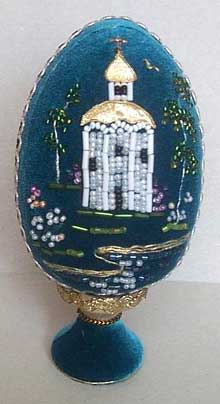

“ CHURCH on NERLI”


The church was built in 1164 as a monument to
Andrew Bogolubsky' successful campaign against Bulgarians. At the
same time it ser ved as a monument to prince's son
Izjaslav, killed in this action.
ved as a monument to prince's son
Izjaslav, killed in this action.
It was the first dedication of the church to the festival of the
Intercession of the Virgin on Russian territory, because this
festival had been established by Andrew Bogolubsky without the
Kiev metropolitan' consent.
It was built at the place were the Nerl river flowed into the
Klyazma, near "the gates of the Suzdal territory". Now
there is the old bed of the Klyazma river on the bank of the
lake. Besides, it was the first temple in Vladimir, which could
be seen by the ships from The Volga and Oka rivers.
As it was found out during the excavations of N.N.Voronin in
1954-55, the church was raised slightly on artificial hill. This
protected it from the spring high water, because the
substructures had been laid in the basis of the hill 5,30 metres
deep in the ground. The hill was paved by the white-stone plates
and the church building was surrounded by the open galleries. In
the wall of the gallery there was a staircase to the choirs.
This church is considered to be one of the masterpieces of the
ancient Russian architecture. The height and the harmony of the
small church is accentuated by its appearance: the projection of
apses is minimal, they are submitted to the main bulk. Pryaslas
of the eastern wall are so narrow, that they can hardly hold the
elements of arcade, whose belt is lifted high above the level of
the choirs and the columns are put
close together. The church walls are bent a little inside, which
intensifies the impression of the temple' height due to the
effect of the perspective reduction. Vertical movement is
especially noticed in the interior, where the height of the
arches is ten times as large as their width. The church was
painted and its floor was decorated with the coloured majolica
plates.
Damages, reconstruction, changes:
In 1803 the "helmet-like" cupola was replaced by the
"onion" cupola.
In the middle of the 19-th century the first excavations were
held. The brick gates were built to the north of the church.
In 1877 the church was reconstructed: the painting was brought
down and the steel reinforcement installed. Damaged carved
details were replaced by the stucco components. Under the drum
spherical roof was installed, which hid the square pedestal of
the 12-th century.